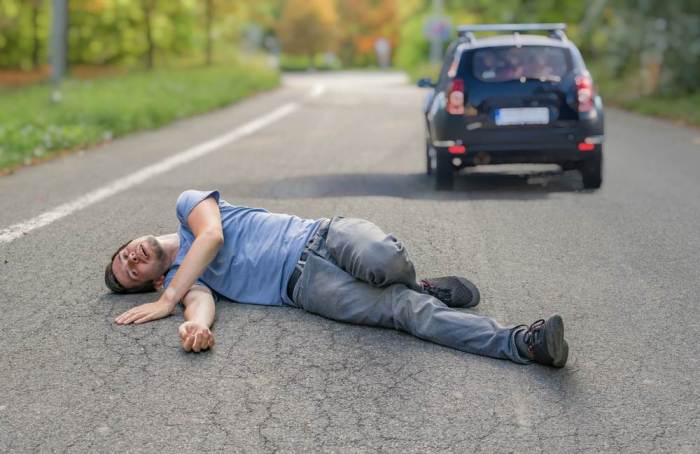A car accident can be traumatic, but a hit-and-run accident adds even more complexity, leaving victims with both physical and emotional burdens. When the at-fault driver flees the scene, getting compensation for injuries and damages becomes challenging. This guide will walk you through your legal options following a hit-and-run and explain how you can pursue justice and financial recovery.
What is a Hit-and-Run Accident?
A hit-and-run accident occurs when a driver collides with another vehicle, pedestrian, or property and leaves the scene without exchanging contact information or providing assistance. In most places, fleeing an accident scene is illegal, and penalties can include fines, license suspension, or even jail time.
The challenges for hit-and-run victims are numerous. Without identifying the driver, victims are often left to bear the financial consequences alone, facing medical bills, vehicle repair costs, and time lost from work. However, certain legal avenues can help victims pursue the compensation they deserve.
Common Injuries in Hit-and-Run Accidents
The injuries sustained in hit-and-run accidents can vary greatly in severity, depending on factors such as the impact speed and where the victim was struck. Some of the most common injuries include:
- Head Injuries: Concussions, traumatic brain injuries (TBIs), and skull fractures are common. Brain injuries can lead to memory loss, cognitive issues, and other long-term health problems.
- Neck and Spine Injuries: Whiplash and herniated discs are frequent injuries in car accidents. Spinal injuries may require extensive rehabilitation and can cause chronic pain.
- Chest and Abdominal Injuries: Injuries such as broken ribs, collapsed lungs, and internal bleeding can be life-threatening and require immediate medical care.
- Soft Tissue Injuries: Bruises, sprains, and strains can limit mobility and cause prolonged pain. They may seem minor initially, but some injuries can worsen over time.
Legal Options for Victims of Hit-and-Run Accidents
Victims of hit-and-run accidents have several ways to seek compensation, even if the at-fault driver is never identified. Here are some of the most common options:
1. Filing a Claim with Your Insurance Company
Most car insurance policies offer uninsured motorist (UM) coverage, which is particularly beneficial in hit-and-run cases. If the responsible driver cannot be identified, UM coverage provides compensation for medical expenses, lost wages, and vehicle repair costs. Review your policy to understand your coverage limits and any applicable deductibles.
2. State Uninsured Motorist Funds
In some states, uninsured motorist funds provide additional support to victims of hit-and-run accidents when the at-fault driver is not found or has no insurance. These funds have varying eligibility requirements and payout limits, so check your state’s guidelines to see if you qualify.
3. Pursuing a Lawsuit Against the Responsible Party
If the at-fault driver is identified, you may have the option to file a personal injury lawsuit. With a lawsuit, you can seek compensation for medical expenses, lost wages, and pain and suffering. While lawsuits can be complex, an experienced attorney can guide you through the process, helping negotiate with insurers or representing you in court if necessary.
Maximizing Compensation After a Hit-and-Run
When pursuing compensation for a hit-and-run accident, there are several steps you can take to maximize the amount you receive:
1. Seek Medical Attention Immediately
After a hit-and-run, it’s crucial to seek medical care right away, even if you feel relatively unhurt. Certain injuries, such as concussions or internal bleeding, may not show symptoms immediately. A prompt medical evaluation helps establish a link between the accident and your injuries, which is essential for your insurance claim or lawsuit.
2. Document All Expenses and Losses
Keep a record of all expenses related to the accident. This should include medical bills, prescriptions, therapy costs, and lost wages from time missed at work. Detailed records can help substantiate your claim and improve your chances of receiving full compensation.
3. Contact a Hit-and-Run Accident Attorney
An experienced attorney who specializes in hit-and-run accidents can be invaluable in navigating the legal process and maximizing your compensation. They will understand the nuances of dealing with insurance companies and know how to build a strong case to ensure you receive a fair settlement.
Benefits of Hiring a Hit-and-Run Accident Attorney
Due to the unique challenges of hit-and-run cases, having a knowledgeable attorney by your side can make all the difference. Here are some of the ways an attorney can assist:
1. Investigation and Evidence Gathering
An attorney can work with law enforcement and private investigators to gather crucial evidence. This might include analyzing surveillance footage, collecting witness statements, or consulting with accident reconstruction experts to build a solid case. By identifying and pursuing the responsible party, an attorney helps secure justice and compensation.
2. Negotiation with Insurance Companies
Insurance companies are often reluctant to offer fair compensation in hit-and-run cases, especially if the at-fault driver is unknown. An experienced attorney can handle negotiations with insurers to ensure your claim reflects the true extent of your losses. They know how to counter common tactics used to reduce or deny claims, giving you the best chance of receiving fair compensation.
3. Litigation Expertise
If your case goes to court, having an attorney with litigation experience is crucial. They will represent your interests, present evidence, and protect your rights throughout the legal proceedings, increasing your chances of a favorable outcome.
Choosing the Right Hit-and-Run Accident Attorney
Finding the right attorney is essential to the success of your case. Here are some qualities to look for when selecting a lawyer:
1. Experience with Hit-and-Run Cases
Choose an attorney with a proven track record in hit-and-run accidents. Experience translates to a deep understanding of the strategies required for these cases, including navigating uninsured motorist claims and working with investigators.
2. Reputation for Success
Look for attorneys who have a history of achieving fair compensation for their clients. Reading client reviews and researching past case outcomes can provide insight into their effectiveness.
3. Communication and Accessibility
It’s important to feel comfortable discussing your case openly with your attorney. Choose someone who is accessible, responsive to your concerns, and willing to explain each step of the process in a way you understand.
4. Contingency Fee Structure
Most personal injury attorneys work on a contingency basis, meaning they only get paid if you win your case. This arrangement can be particularly beneficial if you’re already dealing with the financial strain of a hit-and-run accident.
Conclusion: Moving Forward After a Hit-and-Run Accident
Hit-and-run accidents can be devastating, leaving victims with emotional, physical, and financial burdens. However, you don’t have to face this challenging situation alone. By understanding your legal options, taking proactive steps, and securing the right legal representation, you can navigate the complex road to recovery and obtain the compensation you need.
FAQs
What should I do immediately after a hit-and-run accident?
- Stay calm and ensure your safety.
- Call the police and report the accident.
- Gather as much evidence as possible, including witness information and photos of the scene.
- Seek medical attention, even if you don’t feel injured.
How much compensation can I receive after a hit-and-run accident? The amount of compensation depends on the severity of your injuries, lost wages, property damage, and pain and suffering. An attorney can help determine the fair value of your claim.
What if I don’t have car insurance? Even without car insurance, you may still have options for recovering compensation, such as state-funded programs or legal avenues. Consult an attorney to explore your options.
For additional support, consider resources such as NOLO’s Guide on Personal Injury Law for comprehensive insights into the legal process and what to expect.




